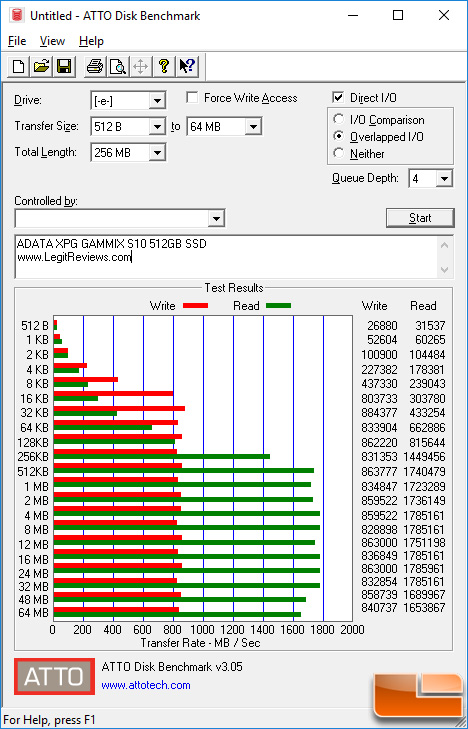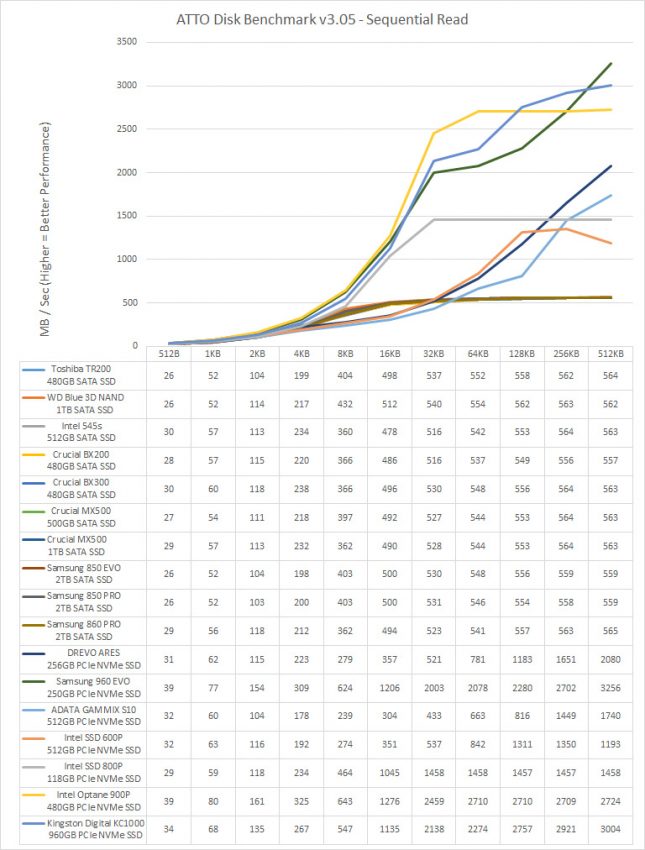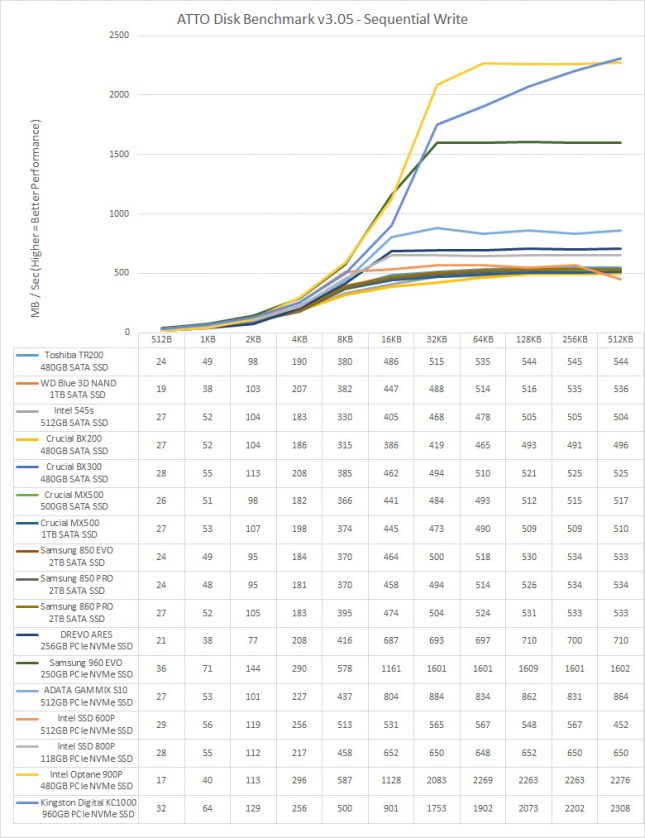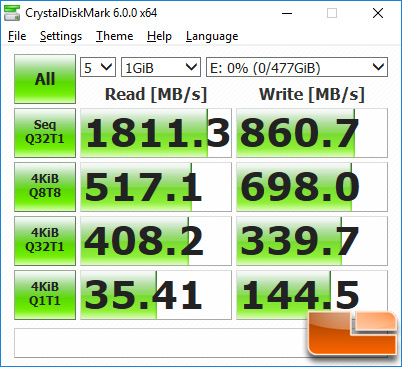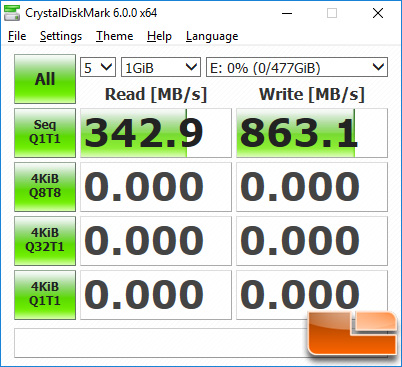ADATA XPG GAMMIX S10 512GB PCIe NVMe SSD Review
ATTO & CrystalDiskMark
ATTO v3.05
ATTO is one of the oldest drive benchmarks still being used today and is still very relevant in the SSD world. ATTO measures transfers across a specific volume length. It measures raw transfer rates for both reads and writes and places the data into graphs that can be very easily interpreted. The test was run with the default runs of 0.5KB through 64MB transfer sizes with the total length being 256MB.
ATTO – ADATA XPG GAMMIX S10 512GB:
Benchmark Results: ATTO showed the ADATA XPG GAMMIX S10 512GB PCIe NVMe drive reaching speeds of up to 1786 MB/s read and 864 MB/s write in the standard overlapped I/O benchmark. This drive is rated at up to 1800 MB/s max sequential read and 850 MB/s max sequential write, so it is nice to see that our Intel Z370 based test platform is able to reach those speeds.
Benchmark Results: Compared to some other SATA III and PCIe NVMe SSDs, the GAMMIX S10 512GB does really well and performs better than all of the SATA III drives at 64KB and larger block sizes.
Benchmark Results: The GAMMIX S10 512GB drive topped out at over 864 MB/s on the 512KB block size test.
CrystalDiskMark 6.0.0 x64
CrystalDiskMark is a small benchmark utility for drives and enables rapid measurement of sequential and random read/write speeds. Note that CDM only supports Native Command Queuing (NCQ) with a queue depth of 32 (as noted) and shows the highest score of five runs.
CystalDiskmark – ADATA XPG GAMMIX S10 512GB:
Benchmark Results: The GAMMIX S10 512GB topped out at 1811 MB/s read and 861 MB/s write in the standard sequential write test that is done at QD32. Random 4K QD1 performance was 35.4 MB/s read and 144.5 MB/s write. Those 4K random performance numbers improved up to 408 MB/s read and 340 MB/s write at a queue depth of 32.
Manually running the sequential performance test at Q1T1 showed performance of 343 MB/s read and 863 MB/s write. The sequential write QD1 performance is faster at QD1 than QD32, so write performance on this model should be excellent as long as its SLC cache doesn’t fill up before the writing is completed.
Let’s look at some other benchmarks!

